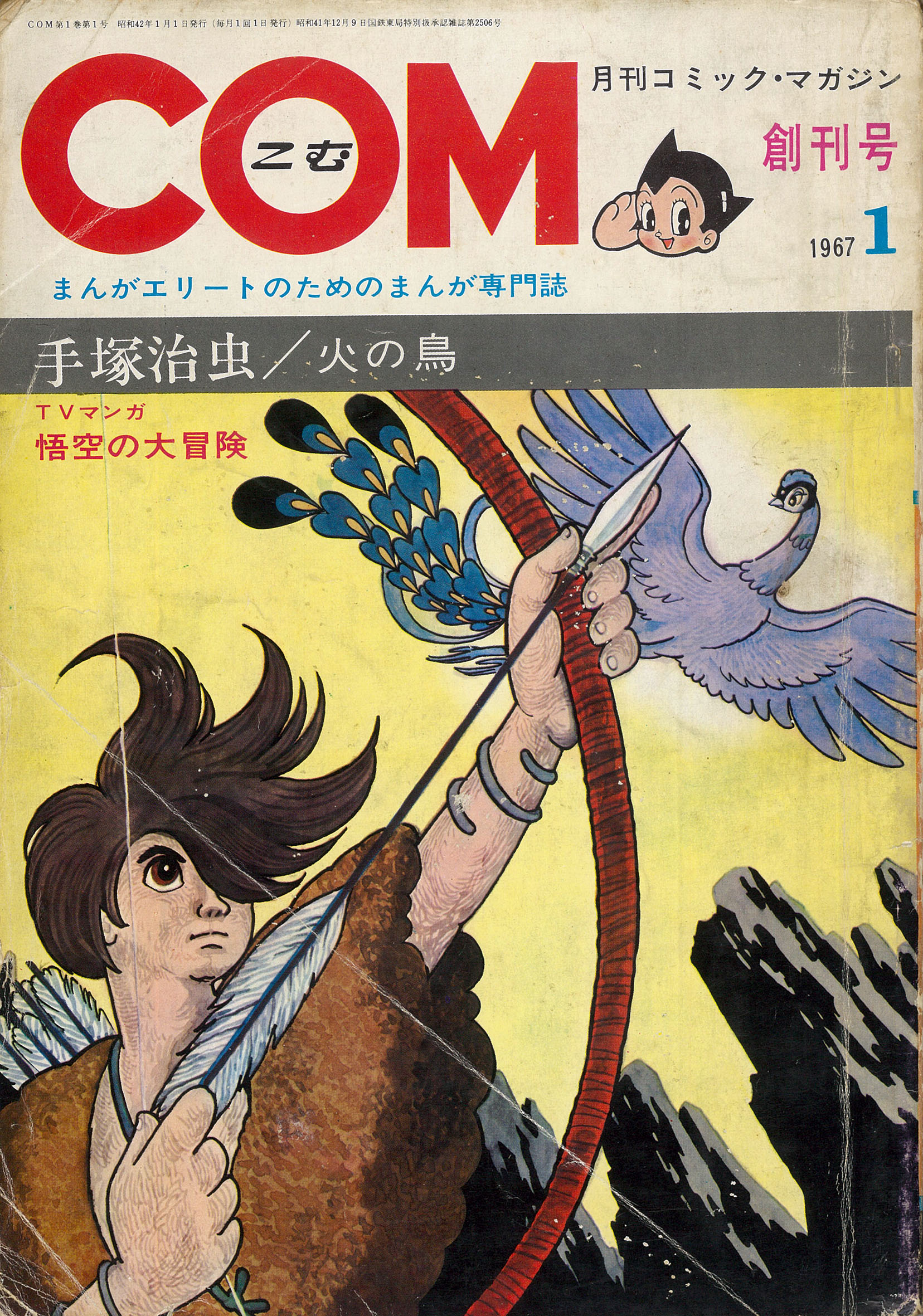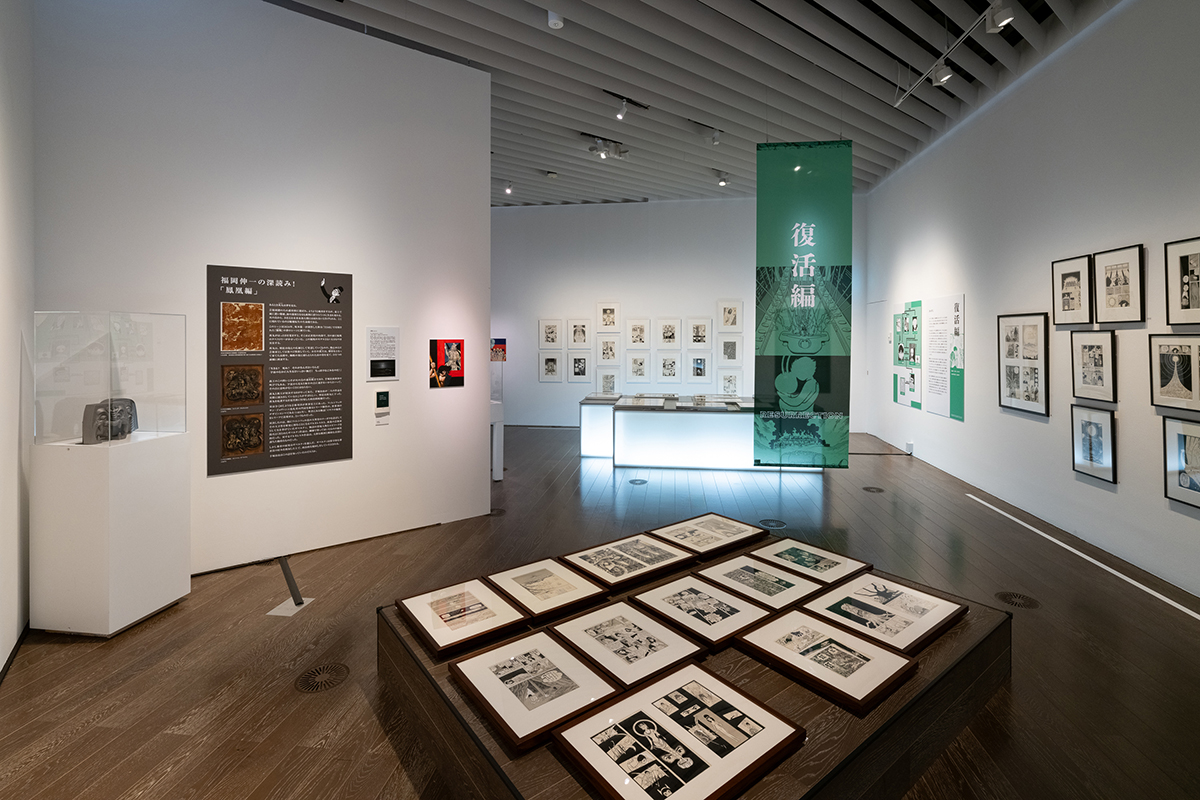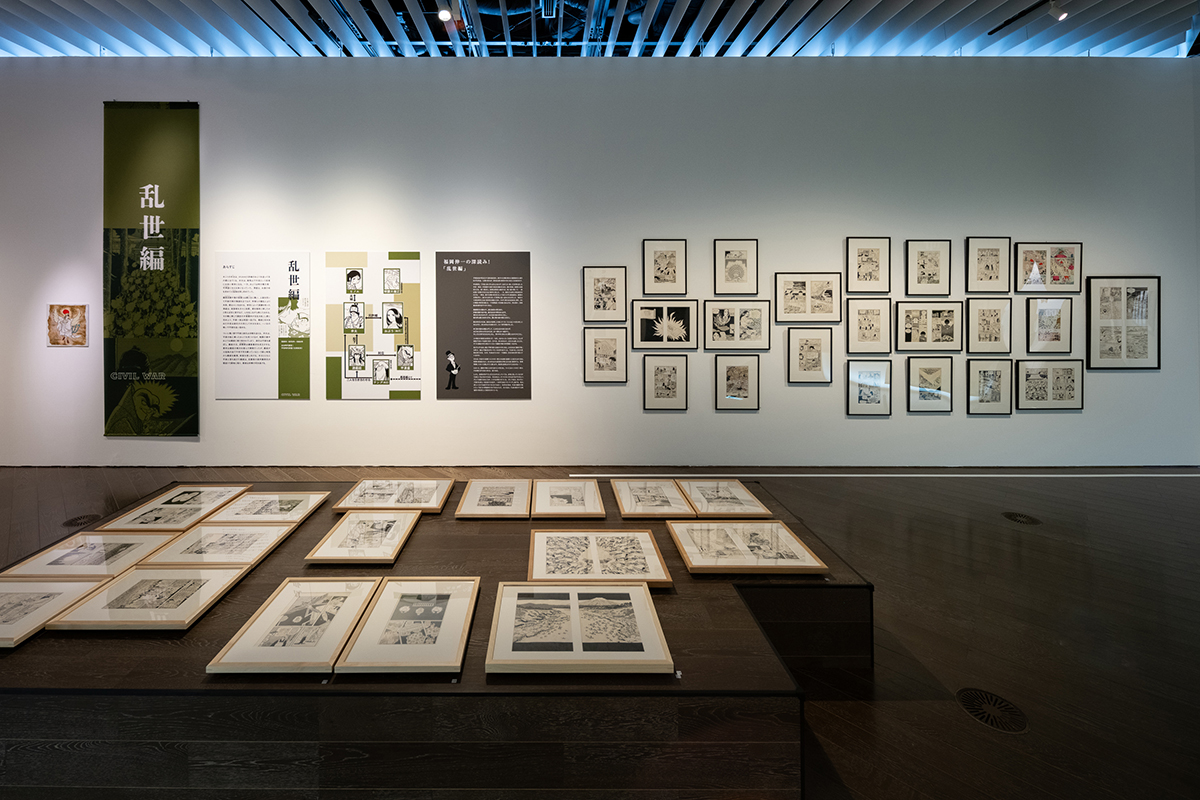OSAMU TEZUKA’S HINOTORI EXHIBITION
Tezuka’s formative years during the Pacific War deeply influenced his storytelling, leading to an enduring fascination with biology, transformation, and the essence of life. His early passion for insects, metamorphosis, and natural cycles would later shape the philosophical core of his manga.

Cover of COM First issue © Tezuka Productions
Phoenix was born in 1954 (Showa 29) with the serialization of the dawning edition in Gakudōsha’s Manga Shonen. It was then serialised in various magazines, including Shojo Club and Mushi Production’s COM. The timeline of the work stretches from before Christ to over 3000 AD, and the setting of the story stretches from Yamatai-koku to the far reaches of space, creating a series of epic poems that transcend time and space. Chapter 1 clarifies this complex story structure and follows it in chronological order along with the historical background of the story’s setting.

Chapter 2: Reading the Story of Eternal Life © Tezuka Productions
Chapter 2 section explores the interconnectedness of Phoenix’s arcs, highlighting how Tezuka wove the past and future into a singular narrative. Sketches and artworks will reveal his evolving vision of an unfinished masterpiece. In this chapter, many precious manuscripts are exhibited. The Phoenix drives the story and is portrayed as a being that constantly watches over the past and future of humanity, while toying with humans who cling to life, believing that drinking its blood will make them immortal. What on earth does the Phoenix symbolize?

Chapter 2: Reading the Story of Eternal Life © Tezuka Productions
Phoenix remained incomplete at the time of Tezuka’s passing in 1989, leaving its ultimate conclusion an open-ended mystery. The exhibition invites audiences to speculate on how the saga might have concluded, using hints from Tezuka’s writings and thematic threads. Tezuka’s daughter, Rumiko Tezuka, emphasizes the importance of preserving his legacy while allowing it to evolve for new audiences. “Phoenix is Osamu Tezuka himself”, she notes. “It was his most personal work, untouched by external influences, and remains a testament to his boundless creativity”.
The exhibition concludes with a video interview between Shin-Ichi Fukuoka and contemporary artist Tadanori Yokoo discussing the Phoenix, as well as a work by Yokoo inspired by the Phoenix.
Read more ...





